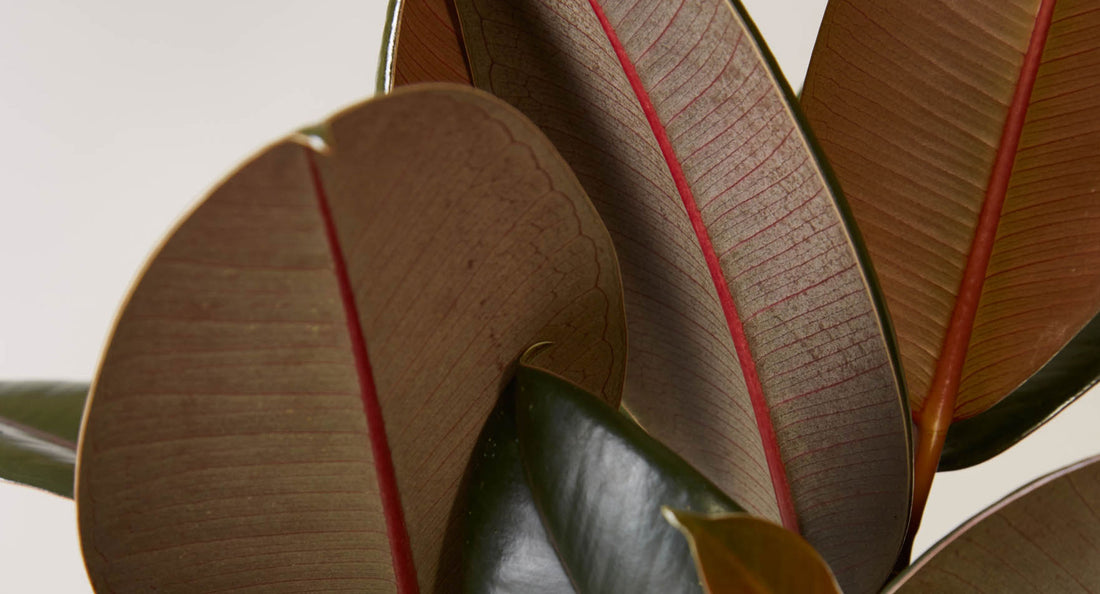
Plants 101
Rubber Tree

Learn how to care for most varieties of Rubber Tree!
Ficus elastica is a species of evergreen tropical tree native to southern China, Southeast Asia, and Indonesia. Belonging to the fig family, Moraceae, it was used for its latex sap to make rubber before synthetics were made available. However, the bulk of rubber made naturally comes from Hevea brasiliensis. Many plants contain substantial amounts of isoprene, but these two plants contain enough in their latexy sap to be used to make rubber.
In addition to being useful for rubber, in tropical Northeastern India, F. elastica roots are used to make living bridges! A dead tree trunk is put across a river, and the F. elastica roots are guided along the trunk. As the trunk rots, the roots grow to the other side, and thicken, and more roots are trained to complete the bridge. The bridge resists wind and flooding well because it is flexible. Truly, this tree is elastic in more than one sense! Rubber trees make excellent houseplants, as they are low-light tolerant, and help clean the indoor air from pollutants.
The family Moraceae is a family of shrubs, trees, and lianas, all of which will bleed a latexy sap upon wounding. Members of this family exhibit foliar polymorphisms, meaning that their leaf shapes will be different for different stages of life. This is a fairly odd characteristic, as most other plants make the same leaf shapes throughout their lives.
General Care
Sunlight
Thrives in medium to bright indirect light, and can tolerate bright direct light.
Water
Water every 1-2 weeks, allowing soil to dry out between waterings. Increase frequency with increased light.
Humidity
Any humidity level will do. Normal room humidity is fine.
Temperature
65°F-85°F (18°C-30°C). It’s best not to let it go below 60°F (15°C).
Size
This plant can reach an ultimate height of about 30’ (10m) and will have a spread of about 10” (3.2m) over the years. However, as a houseplant, will be much smaller.
Common Problems
It is generally a very easygoing plant. May get scale and mealybugs. Treat scale bugs and mealybugs as soon as they appear with weekly sprays of horticultural (Neem) oil and regular wipe-downs of the plant.
SYMPTOM: Color fading on leaves
CAUSE: Not enough sunlight
SYMPTOM: Leaves curling inward coupled with dry potting mix
CAUSE: Underwatered
SYMPTOM: Leaves dropping coupled with wet potting mix
CAUSE: Overwatered
Precautions
This plant is poisonous to cats, dogs, and humans if consumed. Best practice is always to keep houseplants out of reach of small children and pets.
Questions? Email help@thesill.com

Words By The Sill
Empowering all people to be plant people—a collection of articles from The Sill's team of plant experts across a variety of plant care topics to inspire confidence in the next generation of plant parents. Welcome to Plant Parenthood™.
Do Some Plant Shopping